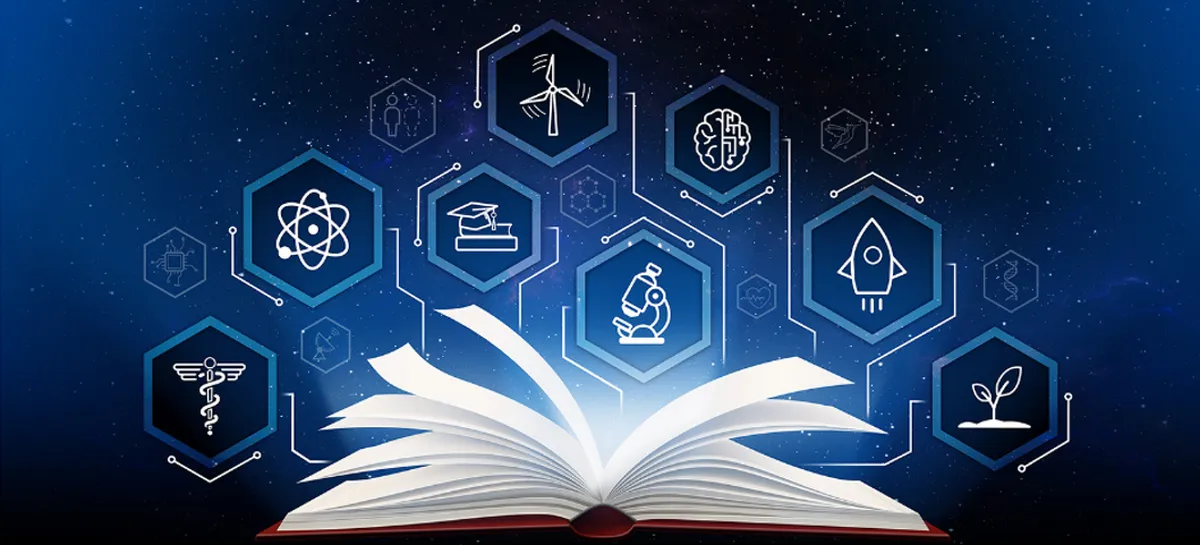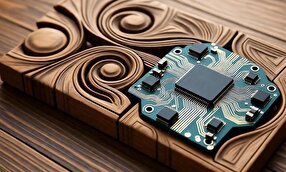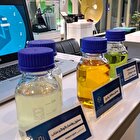Top News of Last Week with ANA

Azad News Agency (ANA) published a number of scientific and technological news during the past week whose top ones are as follows:
Iranian Firm Finds Solution for Bleeding Cylinder Head of Car
An Iranian knowledge-based company has managed to build a device for bleeding cylinder heads of the cars produced in Iran.
“Our company’s product is a bleeding kit that is designed to bleed cylinder heads of all cars but it is mostly used for cars like Samand, Peugeot Persia and 405 that have XU7 injection systems and produced inside Iran,” Payam Heydarnia, the managing director of the company stationed at the Islamic Azad University’s Hamedan branch, told ANA on the sidelines of Asr-e Omid event in the Northwestern city of Tabriz.
“Due to the use of gaskets, these cars need more bleeding, and this device prevents problems caused by heat in the cylinder head,” he added.
“Also our company's super-reinforced spark plug wire is made of copper wire with an alkali coating and has a noise-absorbing layer. Also, a silicone fireproof coating is placed, then a fireproof cotton coating, and finally another silicone layer. All materials used, like brass parts, are of high quality, and this product can be used for 20 types of vehicles,” Heydarian said.
Iran Launches Smart Reservoir Management System
A smart integrated system for optimizing production and managing reservoir dynamics has been launched by the Iranian researchers in a company supported by the Vice- Presidency for Science, Technology and Knowledge-Based Economy.
Mehdi Seyedsar, the head of the Center for Intelligent Well Reservoir Facility Management and Surface Facilities of Oil Fields, announced the launch of an integrated intelligent system to optimize production and manage reservoir dynamics.
“In old methods, reservoir studies were conducted based on past data and sometimes took up to two years, while the reservoir is a dynamic system,” he added.
“Today, with the intelligent WRFM system, information is processed in real time and decisions are made with high accuracy and speed,” Seyedsar said.
Iranian PhD Student Finds Way to Increase Shelf Life of Oilcake by Enzyme Microcapsules
An Iranian PhD student of Islamic Azad University’s Shahr-e Quds branch succeeded in discovering a good way to prolong the shelf life of oilcake by producing enzyme microcapsules and natural antioxidants.
Golnaz Soltani from the agricultre faculty of the university defended her doctoral thesis in the field of food industry, entitled ‘production of microcapsules containing heat-resistant α-amylase enzyme and sour tea anthocyanin nanoemulsion and its application in oilcake containing wheat bran and investigation of antioxidant activity performance during shelf life and release in the digestive tract’.
The thesis was compiled with the aim of in-depth analysis of oxidation processes and investigation of the effect of using heat-resistant encapsulated alpha-amylase enzyme, natural antioxidants and encapsulation on the quality, stability and safety of oilcake consumption.
In this study, physicochemical parameters, storage conditions, the role of heat-resistant alpha-amylase enzyme, and the effect of anthocyanin extract in sour tea and the role of microencapsulation in increasing the shelf life of oilcake have been carefully examined.
Islamic Azad University Experts Renovate Wind Tunnel for Use in Labs
The Iranian experts at Islamic Azad University’s Parand and Robat Karim branch succeeded in restoration of a wind tunnel for appliance in the country’s aerodynamic laboratories.
“A wind tunnel that had been unused at this university for years was renovated and registered in the Strategic Technologies Laboratory Network,” Behrouz Dousti, the president of Islamic Azad University’s Parand and Robat Karim branch, told ANA.
He explained that in cooperation with the University of Tehran and Mabna Company, the tunnel has generated significant income.
“We have also responded to the social needs of Parand city by converting 8 units of the university's 48-unit complex into a mother and child clinic, and a super-clean clinic has been launched,” Dousti said.
A wind tunnel is a structure that simulates airflow around objects, typically used for aerodynamic research and testing. It consists of a tube or duct where air is moved by fans, allowing researchers to study how air interacts with various objects, like aircraft models or even objects like golf balls.
Iranian Knowledge-Based Firm Paves Ground for Construction of EMC, EMI Labs
Iranian experts at a knowledge-based company developed necessary infrastructures to enable all stages of design, construction, and commissioning of EMC and EMI laboratories which are necessary for issuing international standard certificates for electronic products.
“Our company operates in the field of equipping telecommunications laboratories and EMC and EMI laboratories and is responsible for all stages of implementing these laboratories from A to Z. These stages include designing, building chambers, and providing the equipment needed to conduct specialized tests,” said Hassan Karimpour, a representative of the knowledge-based company.
He noted that designing and implementing specialized industrial laboratories, including EMC laboratories, radio sample verification, calibration, and quality measurement, are part of the services provided by the company, adding, “ Also, providing consulting, designing and implementing industrial automation and telemetry systems, providing EMC pre-compliance equipment for real-time monitoring of the electromagnetic compatibility status of products, and holding specialized training courses at the employer's site are other services of our company.”
“To perform modeling and extracting field features of various antennas, the use of these types of laboratories is essential. Also, to perform tests related to EMC and EMI standards on modules, systems, subsystems, and even electronic components and boards, it is necessary to carry out these assessments in specialized laboratories in accordance with defined standards. Finally, after going through the testing procedures, a certificate is issued for the desired product,” Karimpour said.
Iranian Scientists Treat Stroke with AI
Iranian students at Sharif University of Technology’s Bioinformatics department designed a system by using artificial intelligence to help doctors diagnose and manage strokes more quickly and accurately.
“The system we have designed collects patient imaging data, including CT scans, MRIs, and angiographies, and provides remote access to specialist doctors. With the help of artificial intelligence algorithms, this technology automatically analyzes the patient's brain images and provides vital information about the severity of the stroke, the extent of damage, and the exact location of the brain involvement,” said Abolfazl Malek Ahmadi, a master's student in Bioinformatics at Sharif University of Technology.
“This tool helps doctors make decisions in the shortest possible time and choose the best treatment course. In addition to integrating patient data, this software also paves the ground for monitoring the treatment process. The physician can optimize the patient’s treatment process by selecting a monitoring algorithm from among the available options. This capability accelerates decision-making on treatment methods, including drug therapy, medical interventions, or surgical procedures,” he added.
“At present, the MVP (minimum product) version of this system is being evaluated in a number of hospitals in Iran. If this stage succeeds, the commercialization process will start and this technology can be widely used in hospitals across the country,” Malek Ahmadi said.
Iran-Made Artificial Turf Receives FIFA Approval
A knowledge-based company in Iran succeeded in production of artificial turf with a special formulation and design that is approved by the international sports organizations, including the FIFA.
The knowledge-based Termeh Chaman company conducted extensive research and was able to reach the formulation of artificial grass in a way that can be used for various sports. These changes include designing the appearance, diameter, length, physical, mechanical and chemical features of the grass.
In the last two years, the company has optimized the formulation and continuously improved the quality parameters of the product and has presented new designs for other sports and different climatic regions (tropical, cold and temperate).
Relying on the high quality of its products, Termeh Chaman has also entered global markets and attracted customers from the Caspian Sea to the Persian Gulf littoral states.
Iran Actively Participates in Meeting of Nano Committee of ISO
Iranian experts virtually attended the meetings of the specialized working groups of the recent meeting of the Nanotechnology Technical Committee of the International Organization for Standardization (ISO), which was held in Sweden on May 19-23, 2025, and proposed 3 new international standards.
The meeting focused on setting priorities and challenges, and advancing international standards projects.
Standards being developed under Iran's responsibility included nanotechnology- nanoemulsions - main characteristics and measurement methods, and nanotechnology - zinc oxide nanoparticles - main characteristics and measurement methods.
New international standard proposal by Iran also included nanotechnology – nanoliposomes – main characteristics and measurement methods, antimicrobial ceramics containing nanomaterials – specifications and performance evaluation, and nanotechnology – nanoscale hard coatings – specifications and test methods.
So far, 113 standards have been published in various nano sections by ISO, and Iran, with 12 standards developed, is in the fourth place, after the US, South Korea, and Japan, along with the UK.
Iranian Company Produces 67 Varieties of Hybrid Seeds
An Iranian knowledge-based firm has succeeded in producing 67 varieties of hybrid seeds which helps food security in agricultural industry.
“So far, seven of the 11 varieties under research have entered the market, and 67 different varieties of these products have been registered and received seed certificate,” said Maryam Golabadi, the chairwoman of the board of directors and deputy director of Research and Development of the knowledge-based company and a faculty member of Islamic Azad University’s Isfahan branch.
“Our products include greenhouse cucumbers, greenhouse tomatoes, outdoor tomatoes, greenhouse peppers, watermelons, and melons,” she added.
Noting that the yield of these seeds is much higher than traditional seeds in terms of quality, product uniformity, and harvest rate, Golabadi said, “Of course, the exact amount of yield increase depends on several factors like the type of greenhouse, the ability of the farmer, and farm management.”
“Farmers are fully aware of the superiority of these seeds, and in Iranian greenhouses, there is practically no cultivation of non-hybrid seeds,” she added.
Iran’s Razi University, Al-Iraqia University in Iraq to Expand Cooperation
Officials of Razi University in Iran’s Western city of Kermanshah and Al-Iraqia University in Baghdad in a meeting underlined the development of mutual cooperation.
“Based on the latest ranking of the Islamic World Science Citation Database (ISC), Razi University has ranked 8th among 64 comprehensive universities in Iran. This database evaluates universities based on 183 performance indicators,” said Jamal Fat'hollahi, the president of Razi University.
He expressed the hope that scientific and research cooperation between the two universities would expand and these interactions would also help strengthen relations between the two nations of Iran and Iraq.
Ali Saleh Hossein, the president of Al-Iraqia University, for his part, expressed the hope that the memorandum of understanding with Razi University would be implemented quickly and joint cooperation between the two universities would expand.
“Al-Iraqia University is already ready to advance scientific and research cooperation with Razi University,” he added.
Iran Uses Nuclear Technology to Produce Drought-Resistant Rice
Kian is the First Drought-Tolerant Rice Cultivar in Iran Developed Through Mutation of Local Varieties.
This rice variety was obtained through targeted mutagenesis methods and originated from the popular local native variety Tarom. Key features of this variety include high resistance to drought, maintaining cooking quality, excellent aroma and flavor, and high yield. Unlike many high-yielding modified varieties that sacrifice quality for quantity, Kian has created a good balance between quantity and quality.
The yield of this variety is impressive in different conditions; in drought conditions, in brings about 3 tons of paddy per hectare, and in normal irrigation conditions, it yields nearly six tons of paddy per hectare.
In comparison, the native variety Tarom Mahali yields about 3.5 to 4 tons per hectare under normal conditions at best and only 600 kg per hectare under drought conditions, which means that in the worst case, Kian produces five times more yield than Tarom Mahali under drought conditions.
Iran-Made Nano-Based Gel Repairs Wrinkles, Skin Damage
A knowledge-based company in Iran has succeeded in producing innovative products for the non-invasive repair and reconstruction of wrinkles and skin damage by utilizing nanotechnology and medicinal plants.
The technology for producing nanoautosome gamma oryzanol gel was developed for the repair of wrinkles and skin reconstruction; a plant-based and nanotechnological product that can penetrate deeply into the skin tissue, stimulate collagen production, and repair damaged skin.
“We have succeeded to significantly increase the effectiveness of the effective ingredient gamma oryzanol by using nanoautosome technology. This gel can significantly reduce wrinkles and regenerate damaged tissue with high penetration into the skin, without the need for injections or surgery,” said Tabnak, a manager of the company.
“Clinical studies have shown that 40 days of use of this gel can significantly improve the quality and freshness of the skin, without leaving any scars or mark,” he added.
Iranian Knowledge-Based Firm Overhauls Aircraft Engines
Experts at an Iranian knowledge-based company have managed to overhaul the engine of different aircraft, specially the Boeing 737 passenger planes.
“One of our notable achievements is the know-how to indigenize aircraft engine overhaul,” said Amin Qiyasi, the deputy managing director of the Engineering and Maintenance department of the knowledge-based company.
“Our services prevent 40 aircraft from being grounded annually by providing the necessary engine overhaul services which is a very significant number,” he added.
“Our focus is on repairing the engines of the Boeing 737 Classic family of aircraft which includes the 300, 400, and 500 models,” Qiyasi said.
“We have not only carried out overhaul operations, but also reverse-engineered and manufactured several specialized devices, and we are now in the exploitation phase,” he underlined.
Iran Approves New Int’l Nano Standard to Measure Graphene-Based Materials
A new international standard for measuring the elemental composition of graphene-based materials using the XPS method was approved in Iran which plays an important role in improving the electronic and thermal performance of the widely- used nanomaterial in advanced industries.
A standard entitled ‘Nanotechnology – Nanofabrication – Key control characteristics – Part 21-6: Graphene-based materials – Elemental composition, O/C ratio; X-ray photoelectron spectroscopy (XPS) method” was adopted by the International Electrotechnical Commission (IEC)’s Technical Working Group 113 (IECTC113). This standard can be used both in research and development by manufacturers and in product selection by users.
Graphene enjoys unique electrical, thermal and mechanical properties and has wide potential industrial applications, specially in the electronics industry, including in batteries, integrated circuits, high-frequency electronics, displays and other advanced equipment.
The content of major elements, specially oxygen and the carbon to oxygen (O/C) ratio, are key parameters affecting the electronic and thermal performance of graphene materials.
4155/v





















